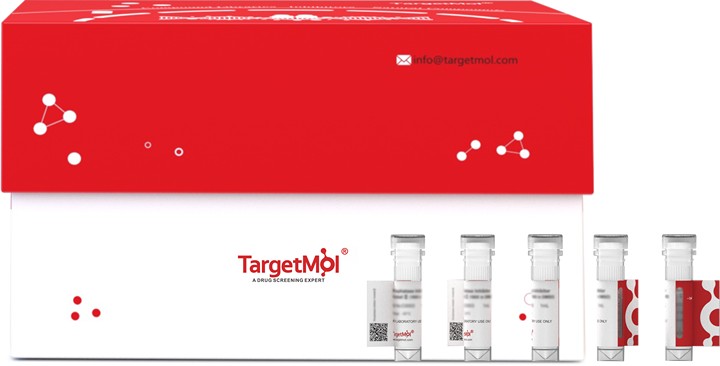Shopping Cart
Remove All Your shopping cart is currently empty
Your shopping cart is currently empty
PKM2 Protein, Mouse, Recombinant (His & Myc) is expressed in Baculovirus insect cells with N-10xHis and C-Myc tag. The predicted molecular weight is 61.8 kDa and the accession number is P52480.

| Pack Size | Price | USA Warehouse | Global Warehouse | Quantity |
|---|---|---|---|---|
| 5 μg | $176 | 20 days | 20 days | |
| 10 μg | $293 | 20 days | 20 days | |
| 20 μg | $491 | 20 days | 20 days | |
| 50 μg | $926 | 20 days | 20 days | |
| 100 μg | $1,500 | 20 days | 20 days |
| Biological Activity | Activity has not been tested. It is theoretically active, but we cannot guarantee it. If you require protein activity, we recommend choosing the eukaryotic expression version first. |
| Description | PKM2 Protein, Mouse, Recombinant (His & Myc) is expressed in Baculovirus insect cells with N-10xHis and C-Myc tag. The predicted molecular weight is 61.8 kDa and the accession number is P52480. |
| Species | Mouse |
| Expression System | Baculovirus Insect Cells |
| Tag | N-10xHis, C-Myc |
| Accession Number | P52480 |
| Synonyms | Tyrosine-protein kinase PKM2,Threonine-protein kinase PKM2,Pyruvate kinase PKM,Pyruvate kinase muscle isozyme,Pykm,Pkm2,Pkm,Pk3 |
| Amino Acid | MPKPHSEAGTAFIQTQQLHAAMADTFLEHMCRLDIDSAPITARNTGIICTIGPASRSVEMLKEMIKSGMNVARLNFSHGTHEYHAETIKNVREATESFASDPILYRPVAVALDTKGPEIRTGLIKGSGTAEVELKKGATLKITLDNAYMEKCDENILWLDYKNICKVVEVGSKIYVDDGLISLQVKEKGADFLVTEVENGGSLGSKKGVNLPGAAVDLPAVSEKDIQDLKFGVEQDVDMVFASFIRKAADVHEVRKVLGEKGKNIKIISKIENHEGVRRFDEILEASDGIMVARGDLGIEIPAEKVFLAQKMMIGRCNRAGKPVICATQMLESMIKKPRPTRAEGSDVANAVLDGADCIMLSGETAKGDYPLEAVRMQHLIAREAEAAIYHLQLFEELRRLAPITSDPTEAAAVGAVEASFKCCSGAIIVLTKSGRSAHQVARYRPRAPIIAVTRNPQTARQAHLYRGIFPVLCKDAVLNAWAEDVDLRVNLAMDVGKARGFFKKGDVVIVLTGWRPGSGFTNTMRVVPVP |
| Construction | 1-531 aa |
| Protein Purity | > 90% as determined by SDS-PAGE. |
| Molecular Weight | 61.8 kDa (predicted) |
| Endotoxin | < 1.0 EU/μg of the protein as determined by the LAL method. |
| Formulation | Tris-based buffer, 50% glycerol |
| Reconstitution | A Certificate of Analysis (CoA) containing reconstitution instructions is included with the products. Please refer to the CoA for detailed information. |
| Stability & Storage | Lyophilized powders can be stably stored for over 12 months, while liquid products can be stored for 6-12 months at -80°C. For reconstituted protein solutions, the solution can be stored at -20°C to -80°C for at least 3 months. Please avoid multiple freeze-thaw cycles and store products in aliquots. |
| Shipping | In general, Lyophilized powders are shipping with blue ice. Solutions are shipping with dry ice. |
| Research Background | Glycolytic enzyme that catalyzes the transfer of a phosphoryl group from phosphoenolpyruvate (PEP) to ADP, generating ATP. The ratio between the highly active tetrameric form and nearly inactive dimeric form determines whether glucose carbons are channeled to biosynthetic processes or used for glycolytic ATP production. The transition between the 2 forms contributes to the control of glycolysis and is important for tumor cell proliferation and survival. In addition to its role in glycolysis, also regulates transcription. Stimulates POU5F1-mediated transcriptional activation. Promotes in a STAT1-dependent manner, the expression of the immune checkpoint protein CD274 in ARNTL/BMAL1-deficient macrophages. Also acts as a translation regulator for a subset of mRNAs, independently of its pyruvate kinase activity: associates with subpools of endoplasmic reticulum-associated ribosomes, binds directly to the mRNAs translated at the endoplasmic reticulum and promotes translation of these endoplasmic reticulum-destined mRNAs. Plays a general role in caspase independent cell death of tumor cells. |
| Size | Quantity | Unit Price | Amount | Operation |
|---|

Copyright © 2015-2025 TargetMol Chemicals Inc. All Rights Reserved.